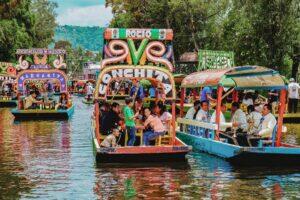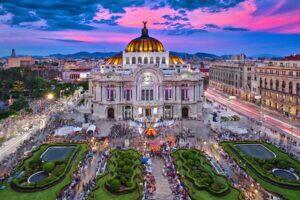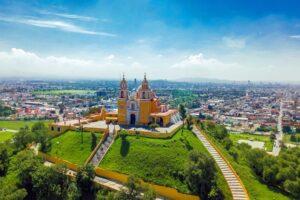Fodor's Expert Review Museo Nacional de Antropología
Architect Pedro Ramírez Vázquez's outstanding design provides the proper home for one of the finest archaeological collections in the world. Each salon on the museum's two floors displays artifacts from a particular geographic region or culture. The collection is so extensive that you could easily spend a day here, and even that might be barely adequate.
The 12 ground-floor rooms treat pre-Hispanic cultures by region, in the Sala Teotihuacána, Sala Tolteca, Sala Oaxaca (Zapotec and Mixtec peoples), and so on. Objects both precious and pedestrian, including statuary, jewelry, weapons, figurines, and pottery, evoke the intriguing, complex, and frequently warring civilizations that peopled Mesoamerica for the 3,000 years preceding the Spanish invasion. Other highlights include a copy of the Aztec ruler Moctezuma's feathered headdress (the original is now in Vienna); a stela from Tula, near Mexico City; massive Olmec heads from Veracruz; and vivid reproductions of... READ MORE
Architect Pedro Ramírez Vázquez's outstanding design provides the proper home for one of the finest archaeological collections in the world. Each salon on the museum's two floors displays artifacts from a particular geographic region or culture. The collection is so extensive that you could easily spend a day here, and even that might be barely adequate.
The 12 ground-floor rooms treat pre-Hispanic cultures by region, in the Sala Teotihuacána, Sala Tolteca, Sala Oaxaca (Zapotec and Mixtec peoples), and so on. Objects both precious and pedestrian, including statuary, jewelry, weapons, figurines, and pottery, evoke the intriguing, complex, and frequently warring civilizations that peopled Mesoamerica for the 3,000 years preceding the Spanish invasion. Other highlights include a copy of the Aztec ruler Moctezuma's feathered headdress (the original is now in Vienna); a stela from Tula, near Mexico City; massive Olmec heads from Veracruz; and vivid reproductions of Mayan murals in a reconstructed temple. Be sure to see the magnificent reconstruction of the tomb of 7th-century Mayan ruler Pakal, which was discovered in the ruins of Palenque. The nine rooms on the upper floor contain faithful ethnographic displays of current indigenous peoples, using maps, photographs, household objects, folk art, clothing, and religious articles.
Explanatory labels have been updated throughout, some with English translations, and free tours are available at set times from Tuesday through Saturday, with a prior reservation. You can reserve a special tour (minimum five people) with an English-speaking guide by contacting the museum two weeks in advance. Otherwise, opt for an English audio guide or the English-language museum guide for sale in the bookshop.
READ LESS








